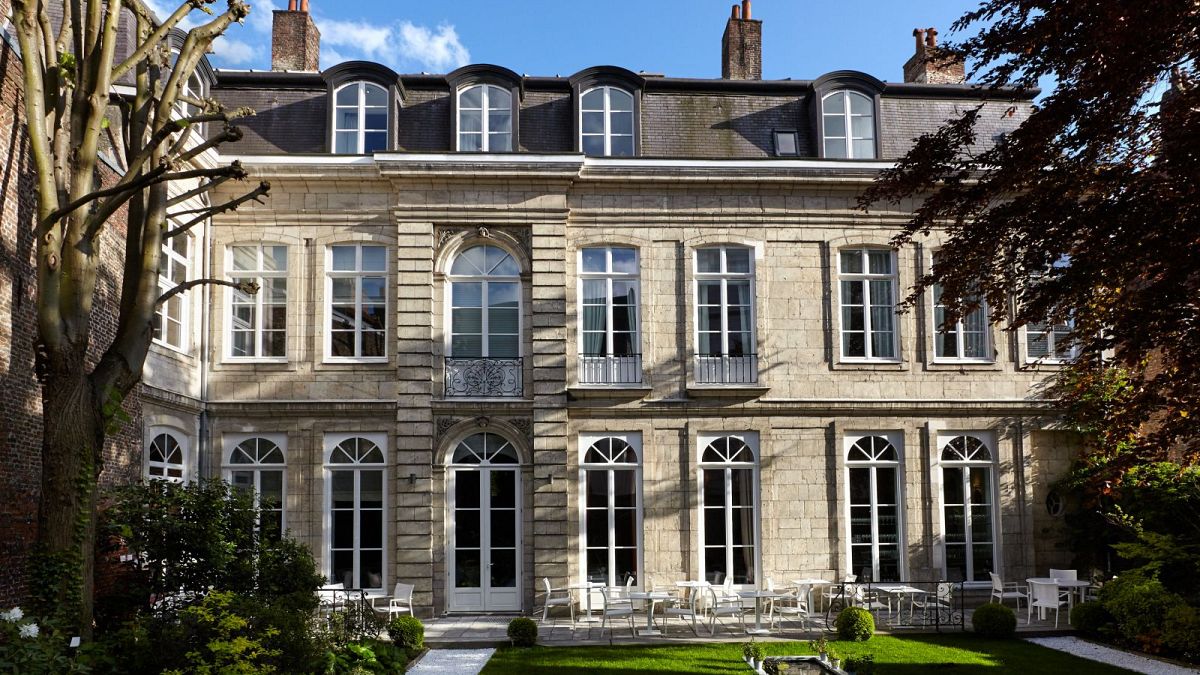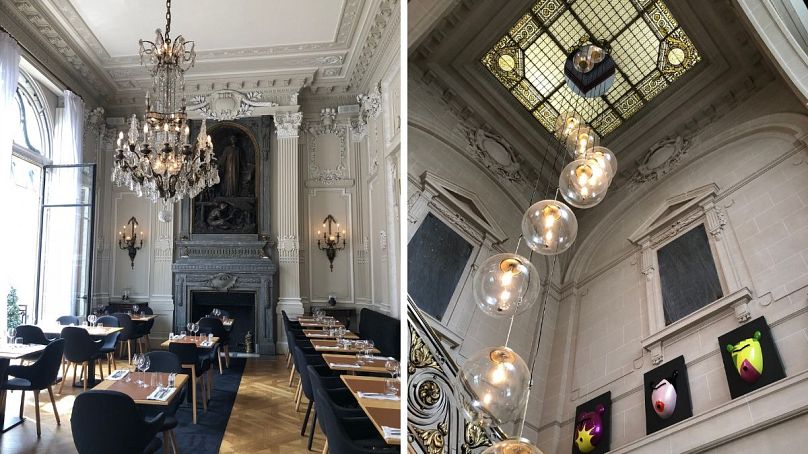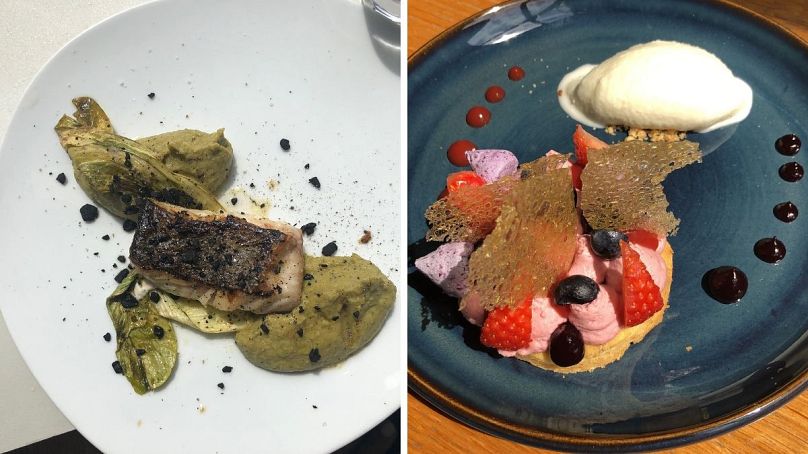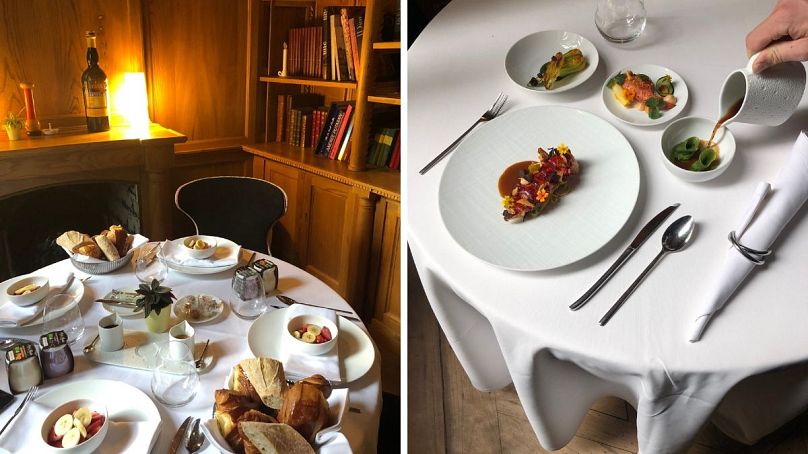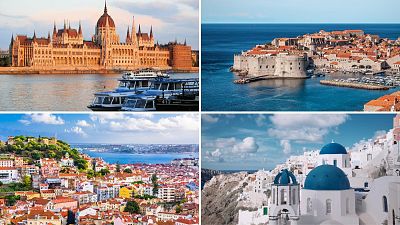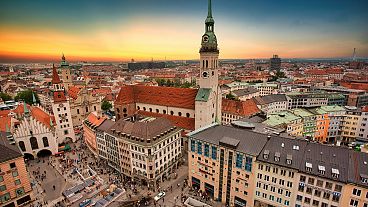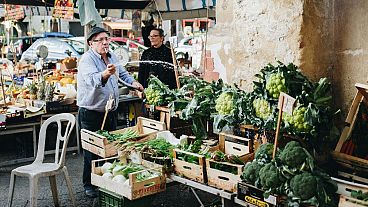Looking for a city break? Follow our guide to discover the restaurants, hotels and galleries that will enrich your trip.
Looking for a city break? Follow our guide to discover Lille's best restaurants, hotels and galleries that will enrich your trip.
Where to stay in Lille?
Nestled in the heart of the vieux Lille, the city’s oldest and most luxurious quarter, the Clarance Hotel is a gem not to miss. This 18th century townhouse turned 5-star hotel, and only Relais & Châteaux in the area, perfectly balances old architecture and contemporary decoration. The 19 rooms and suites all revolve around one very French and romantic theme: Baudelaire’s poetry. All named after the artist’s poems, the cosy and glamorous bedrooms all stand by the poet’s ultimate promise: "luxury, tranquillity and voluptuousness."
Art in all its shapes and forms is at the core of this boutique hotel’s concept: around the building and in each bedroom, designs, paintings and photographs by French and international artists graciously cover the walls. After a good night sleep in a very comfortable (too) king size bed, the breakfast will be an excellent reason to get out of bed. Homemade pastries and granola, detox juices, eggs prepared in your way – everything is organic of course. Whether you’re on a romantic getaway or just sightseeing with friends and family, make sure to book to have your breakfast in the library. It's a wooden panelled, intimate, cosy room that overlooks the garden. You can also climb the little stairway to discover the hotel’s book collection.
The Jardin de Clarance is a 300 m² green oasis, and is home to an organic vegetable garden, fruit trees and beehives; the fruit and honey is on offer to the hotel’s guests. No fertiliser nor pesticides are used in this garden where all the herbs, fruit and vegetables are organically grown by Michelin star chef Thibaut Gamba, who runs the hotel’s gastronomic restaurant. Because sustainability truly matters to the Clarance Hotel, their garden is in the process of becoming Green Globe certified for its approach and performance in terms of sustainable development.
What to see in Lille?
Lille 3000, the city’s cultural organisation, presents major cultural exhibitions every three years and spreads a different theme across the whole metropolitan area each time. From April 2019 and until early December, the new theme is 'Eldorado'. With more than 50 exhibitions in the city and its surroundings, this major cultural event features Mexico as a guest of honour, with its contemporary artists and richness of its popular cultures. This Spring-Summer-Autumn programme makes great use of outdoor spaces, giving visitors the opportunity to explore the region during the sunny season.
LAM Villeneuve d’ascq: contemporary art collection Giacometti, Calder
Located in Villeneuve d’Ascq, only 20 minutes from Lille’s city centre and accessible via metro bus or tram, the LaM – Lille Métropole Musée d’art moderne, d’art contemporain et d’art brut – is widely acclaimed for its prestigious collection of modern art boasting masterpieces by prominent artists such as Georges Braque, André Derain, Henri Laurens, Fernand Léger, Joan Miró, Amedeo Modigliani, Pablo Picasso and many more. In addition to all the masterpieces, you can admire the museum’s galleries and you will find that its sculpture park is as impressive.
Admire monumental sculptures by Alexander Calder, Richard Deacon, Eugène Dodeigne, Jacques Lipchitz, Pablo Picasso and Jean Roulland set in the lush greenery of the museum’s garden, home to many open-air events – plan ahead so that you can spend the night stargazing in the park or sharing a barbecue with the locals.
Lille Metropole, World Design Capital 2020
The World Design Capital® (WDC) is appointed every two years by the World Design Organisation to recognise a city’s innovative use of design in order to strengthen economic, social, cultural and environmental development. In 2020, the city of Lille and its metropolitan area, will become a platform showcasing the best examples in design-led urban policy and innovation. This is evident in in different domains such as public transport, sustainable infrastructure, demographic evolution, mobility, renewable energy, inclusive and transparent governance, and much more. Designers from all around the world will exhibit their urban innovations throughout the city and its outskirts.
Villa Cavrois
The Villa Cavrois, a true design masterpiece designed by architect Robert Mallet-Stevens and a figure of the modernist school, was built in the city of Croix (a stone's throw away from Lille) in the early 1930s for Paul Cavrois, a local textile industrialist and his family. After being uninhabited and abandoned for years, the majestic Villa was finally listed as a historical monument in 1990 and was then acquired by the State in 2001. A couple years later, a huge restoration project was launched and completed in 2015. Today, the villa and its gardens are exactly the same as they were almost a century ago: so simple, practical and yet breathtaking.
Where to eat in Lille?
Coke
This French brasserie and cocktail bar, located in the city center (vieux Lille), lies in a typical 19th century Neo-classic building, designed by Louis-Marie Cordonnier, one of the most eminent architects the city has known. The menu, halfway between a brasserie and a gastronomic restaurant, values the wealth of the region by holding the terroir and its producers in high regard. Two tasting menus of 4 or 6 services, around seasonal products and the Northern region, are proposed for lunch or dinner. And after a long day of sightseeing and walking around the paved streets of the city, head to Coke’s cocktail bar for premium 'apéro' (which consists of nibbling on amuse-bouches and enjoying drinks before dinner), have a classic cocktail or let the bartender surprise you with their mixology skills.
SOlange
Lille is home to many chefs and particularly Top Chefs who come back to their hometowns once the program has ended to open up their own restaurants. Christophe Pirotais, who was a contestant in 2015 launched SOlange, a bistrot serving proper 'bistronomy' food (a blend of bistro and gastronomy), for a very affordable price. With a different menu every day, Chef Pirotais builds his cuisine around the local terroir, in a warm and welcoming atmosphere. For lunch, it'll be 23€ for a starter, main and dessert menu and 28€ for dinner.
Rouge Barre
In a city full of talented chefs, Steven Ramon’s Rouge Barre is a statement for local cuisine. This 2014 Top Chef contestant, who started working alongside renowned chefs a decade before joining the show, has a particular knowledge of France's Northern terroir. "90% of the products we use are locally sourced," explains Chef Ramon. "We buy our fruit and vegetables at a local market, buy fresh fish that have been caught an hour away. We mostly cook fish and try to eat as less meat as possible for obvious ecological reasons," he adds. For lunch, for a starter, main and dessert, it's 23€. For 6 courses including wine it costs 98€.
Le Clarance
This one Michelin star restaurant, led by the young and talented chef Thibaut Gamba, is the city’s most precious delight. Book a table for dinner, either in the main room, the library or the Jardin de Clarance and blindly try the chef's tasting menu. Created from what inspires him each day, with fresh ingredients from his own garden, this meal is a true gourmet experience. As the food will open your senses, let the sommelier pour whichever wines or liquor he sees fit. The chef’s approach is as sustainable as it gets: "95% of the products we use are locally sourced. We grow our own aromatic herbs in the restaurant’s garden," explains Chef Gamba. His inspiration?" Seasons and colours, I love matching colours in my dishes and I have a thing for monochromes."
